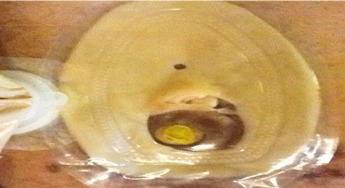
Management of an Enteroatmospheric Fistula
This case study examining the use of eakin Wound Pouches™, eakin Cohesive® paste and eakin Cohesive® skin barriers in managing an open wound and enteroatmospheric fistula.
Submitted by: Lawrence Ikahu, Clinical Practice Consultant – Continence and Stoma Care, Aga Khan University Hospital, Nairobi, Kenya
Patient History
• A 72-year-old gentleman.
• Intestinal obstruction and a parastomal hernia.
• An interventional laparotomy was performed but the patient was left with an open abdomen.
• Later developed an enterocutaneous fistula.
• The enteroatmospheric fistula was being managed by negative pressure wound therapy (NPWT) with little success.

Care Management Plan
The new care management plan involved use of an eakin Wound Pouch™ which facilitated the maintenance of moisture around the wound while allowing fistula output to drain, avoiding leakage. eakin Wound Pouches™ were used for 3 weeks in hospital. The patient was discharged home with the eakin Wound Pouch™ being changed every 2 days. A combination of eakin Cohesive® skin barriers, eakin Wound Pouches™ and eakin Cohesive® paste were used to protect the surrounding skin. The eakin Wound Pouch™ facilitated wound healing, ensured accurate measurement of output and did not hinder the gentleman’s mobility. Progress over the following month was impressive.
The wound reduced markedly in size from a 10 cm diameter to a 2 cm diameter, meaning wound closure was imminent. There were two options available for closure; either allow the small wound to close naturally or for the plastic surgeon to create a muscle flap.

Conclusion
• Fistula output could be monitored.
• Accurate fluid measurement.
• Patient discharged home.
• Patient able to be mobile.
• Odour Control.
• Home nurses only needed to attend every 2 days.


 US
US 